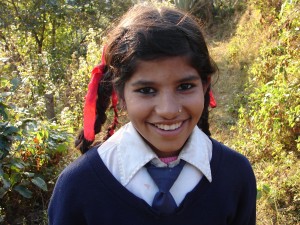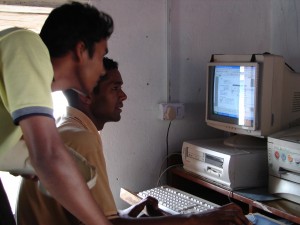We once chatted with some villagers at a teashop about the topic of “development”. Had anything been achieved in their community? Sure, everybody agreed, there was something. Well, of course there was still much to do about the road and the electricity which didn’t reach to their remote part of the VDC. But at least they now had a local school: now the kids no longer had to hike all the way down the hill. The school was next door – a bit small perhaps, only with two teachers, but it was good enough until grade 7. What was unusual about their account of local development was not the school, but who built it. “A guy called Michael”, the Ward Chairman began. “He came here and talked about education, and if we wanted to help build it, he would provide the materials.” So, who was Michael? Someone from Germany, and a carpenter of trade, who decided to spend some years to help villagers along the trails he hiked years earlier as a tourist! It is astounding, we think, the number of people like him who have actually contributed to local development.
Take another guy, in this case a now retired veterinarian from Denmark, who once went on a trip to Upper Solu and fell in love with the area and its people. There was a dire need for income and education, he realised, while hiking through this remote part of Nepal, and he decided to return to do something about it. Indeed, so he did! He was able to take leave from his job at home to devote several months a year to organising construction of schools and other local development work. It was an effort on two fronts: back in Denmark to raise funds, especially to contact various private charities, and in Upper Solu to bring locals together around the project, making it accepted and of course organising the work itself. A few million rupees was all it took to build the first couple of schools, including hiring the teachers to work there. A lot of local artisans and porters got involved in the construction, and were paid too. This gave an immediate boost to the local economy which is still noticeable in many ways: a bit more pots in the kitchens, more livestock in the sheds, and a greater demand for local goods. The “Himalayan Project”, as its named, is now in its 13th year and is an integral part of the community.
There are many other examples. Sometimes it’s a short-term thing, like a Japanese tourist who came back after his first visit to a village out in Kavre and donated money for a jeep to a village, never to return. In other cases, it’s initiatives like the one in Upper Solu which is committed to a long-term effort. However, in spite of their quite high numbers, these kind of private contributions are rarely in the news or mentioned in the “development reports”. In fact, we don’t really hear much about them, except if accidentally going to their locations. While most people have heard about big donors like UNDP and the World Bank, and bi-lateral agencies like Danida and DFID, few would know about “Michael” who built a school or the Himalayan Project in Upper Solu, for that matter. But small doesn’t mean insignificant, even in the bigger picture of development in Nepal. So, we will devote an entire section here at Local Nepal Today to covering such small initiatives, not because they are small, but because they represent a different side of the “development story”. For one, they can be very significant locally. Moreover, unlike many big donors, a large portion of their money usually hits the target: it reaches the beneficiaries in the shape of real output as opposed to administration.
What we would really like to cover is the experience of the small development initiatives not only in professional terms but also on a personal level. There is no doubt from what we have seen that those foreigners who are involved often gather deep insights in many respects. They are constantly present in the areas which they have decided to operate in and, as such, they have a quite unique opportunity to not only make a “development project” but also to learn about becoming accepted and even integrated in a local community. How do you do that? What do you learn about the people – and even yourself? In other words, in addition to the “development experience”, we can’t help wondering about the “human story” to it. In short, if you are involved in a small development project, we’d love to hear about it. Drop us a message or a post and we’ll contact you. To other readers, we’ll keep our eyes open and bring you stories as we learn about them. So, stay tuned for more!



